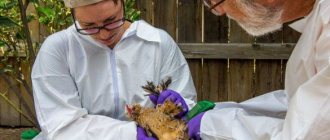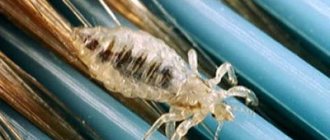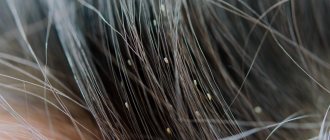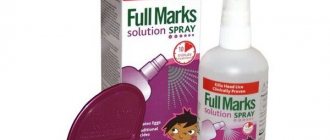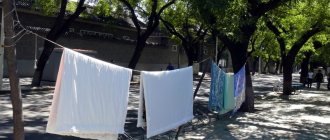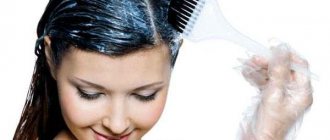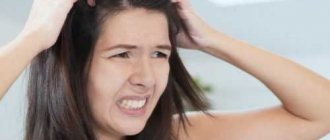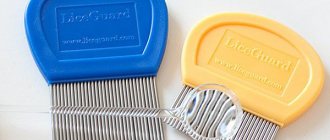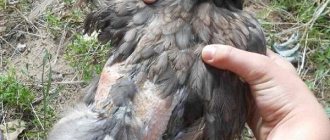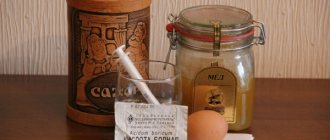Pediculosis
1. Pediculosis
1.1 Etiology of pediculosis
Pediculosis (Lice) is a parasitic skin disease caused by lice. Pediculosis often develops under unfavorable hygienic conditions, uncleanliness, and in places where large numbers of people live densely.
Lice (Anoplura) are insects that feed on blood and spend their entire lives on the human body. There are:
- Head lice;
- Body lice;
- Pubic lice.
Head lice (Pediculus capitis) parasitize the scalp and lay grayish-white eggs (nits), which are tightly attached to the hair with a chitinous substance.
Body lice (Pediculus vestimenti) settle in bed and underwear, underwear and outerwear, from where they get on the skin.
Pubic lice (Pediculus pubis), or lice, unlike head and body lice, are held on the hair by only three legs of one half of the body and move along the hair in the same way. They live on the hair of the pubic region, lower abdomen, thighs, armpits, chest, perineum and anus, since in these areas there are a large number of apocrine sweat glands, to which the sense of smell of pubic lice is specifically oriented. Nits may also be present on the hair of adult individuals at the same time. Rarely affecting children, pubic lice settle in the eyebrows, eyelashes and scalp.
Getting onto the scalp and clinging to the hair with the help of mites located on the legs, the louse thrusts its mouthparts into the skin and sucks blood from the capillaries. Along with the bite, under the influence of skin irritation with the secretion of the salivary glands, itchy spots and nodules appear (characteristic of head and body lice). As itching increases, scratching appears, as a result of which inflammation intensifies and spreads, erosions, crusts, peeling are formed, and then vesicles, weeping - an eczematous process develops, which can be complicated by pyoderma. The appearance of maculae coeruleae in pediculosis pubis is associated either with the appearance of small hemorrhages when lice suck blood, or with the deposition of secretion from the salivary glands of lice.
1.2 Pediculosis clinic
The incubation period from the moment of infection to the onset of symptoms can last up to 30 days or more.
- Head lice are more common in girls and women. The most common localization of lice and nits is the temporal and occipital regions. In advanced cases, insects appear on the eyebrows, eyelashes, and in men - in the beard and mustache. Severe itching, scratching, and diffuse skin irritation are noted. Eczematization may occur - the appearance of blisters and weeping. The thick, abundant exudate that is released shrinks into crusts, sticking the hair together into thick tufts, up to the formation of felt-like cocoons. Patients have an unpleasant odor. The disease is often complicated by pyoderma, which can spread to the ears, neck, forehead, eyebrows; at the same time, regional lymph nodes become inflamed and enlarged.
- Body lice most often affects adults, less often children.
- Lice parasitize in places where the folds and seams of dresses and clothing come into contact with the body (armpits, inguinal-femoral folds, lower back, abdomen, upper back). The disease is accompanied by itching and scratching. Complications associated with pustular flora (folliculitis, boils, ecthyma) are possible. With a long course of the disease, areas of thickening of the skin with linear scratching and peeling develop in the affected areas, and the skin acquires a dirty gray, grayish-brown tint. After recovery, hyperpigmented spots remain.
- Pediculosis pubis affects mainly adults through sexual intercourse, less often through underwear or bed linen. This disease is more common in women aged 15-19 years. After 20 years, its frequency levels off in men and women. Pediculosis pubis is accompanied by less severe itching than other forms of pediculosis, so scratching with its usual consequences (secondary infection, eczematization) is less common. The process is usually limited to the pubis, but the thighs and trunk may be involved, especially in people with highly developed hair. When eyelashes are damaged, blepharitis develops. Pediculosis pubis is characterized by the appearance of bluish or gray spots, up to 1 cm in diameter, which quickly disappear. They are especially pronounced on the abdomen, chest, side surface of the torso and thighs.
1.3 Diagnosis of pediculosis
If any itchy rash is detected on the scalp, head lice should be ruled out. All persons seeking medical care and undergoing routine medical examinations are subject to examination for pediculosis.
The diagnosis of pediculosis is made on the basis of the clinical picture - a visual examination and the results of a parasitological study.
By visual inspection with the naked eye or with a magnifying glass, adult lice can be seen. Insects are better distinguishable after they have drunk blood. With lice pubis, lice appear as gray-brown dots located at the root of the hair. Lice are absolutely motionless, but when you try to tear them off, they show signs of life and cling even more actively to the hair, from which they tear themselves off only with great difficulty. To separate a louse, you need to pull it with tweezers along the entire hair. More often, nits are found that are firmly attached to the hair. Nits are sometimes confused with kinks or knots in the hair, as well as flakes in seborrheic dermatitis and dandruff. To confirm the diagnosis, microscopic examination of the hair is necessary.
to differentiate pediculosis from:
- Pyoderma;
- Microbial eczema;
- Neurodermatitis;
- Seborrheic dermatitis;
- Psoriasis;
- Contact dermatitis.
2. Measures to combat head lice. Treatment and prevention of pediculosis
2.1 Measures to combat head lice
If you suspect body lice, you should contact a medical institution (clinic, skin and venereal disease dispensary), whose medical worker will submit an application to the Disinfection Station of the administrative district to carry out the treatment of things and apartments, or you yourself should contact the Disinfection Station at your place of residence.
In case of head lice, treatment can be carried out on your own, for which you need to buy an anti-pediculosis agent at a pharmacy or specialized store and treat the head strictly according to the instructions. After processing and washing your hair, for better removal (peel-off) of nits, you should moisten your hair with 9% table vinegar diluted in half with water and comb it thoroughly with a fine comb. If necessary, the treatment is repeated every 7 days until insects and nits are completely destroyed.
In the presence of skin diseases, allergies and in children under 5 years of age, when the use of anti-pediculosis drugs is not advisable, mechanical combing of lice and nits is carried out with a fine comb. For children, a haircut is possible.
Simultaneously with the treatment for pediculosis, underwear and bed linen are changed, followed by washing, linen and outerwear are ironed with steaming.
If you suspect pubic pediculosis, you should contact the skin and venereal disease clinic at your place of residence to treat and treat the consequences.
The first option is self-processing.
Buy any product for treating pediculosis (lice) at the pharmacy.
Treat the child’s scalp with the product strictly in accordance with the attached instructions.
Wash your baby using baby soap or shampoo. For boys, a haircut is possible.
Remove dead insects and nits mechanically (pick with your hands or comb out with a fine-toothed comb). To remove nits, you need to wet strands of hair in a solution prepared from equal amounts of water and 9% table vinegar. Rinse your hair with warm water.
Put on clean underwear and clothes for your child.
Wash bedding and baby's clothes separately from other things, iron them using steam.
Inspect and, if necessary, treat all family members. Don't forget about yourself.
Report the situation to the doctor (nurse) of the children's institution that your child visits, so that a set of anti-pediculosis measures can be carried out.
Repeat examinations of the child and all family members after 7, 14, 21 days and, if necessary, carry out repeated treatments until insects and nits are completely eradicated.
The second option is processing in a sanitary checkpoint.
If you cannot carry out the treatment yourself or would like to receive professional help, then contact any sanitary checkpoint of the city disinfection center, and they will definitely help you. Processing in sanitary checkpoints is carried out free of charge.
In advance, by phone, specify the route to the sanitary checkpoint and the processing time convenient for you.
The third option is an independent method of machining.
It is carried out in cases where your child has skin or allergic diseases and if the child is under 5 years of age.
Sequencing:
- Comb out live insects with a fine-toothed comb, preferably in the bathroom, and rinse with hot water.
- Treat strands of hair carefully, without touching the child’s scalp, with 9% table vinegar diluted in half with water and remove nits from the hair with your hands or a comb. You can put cotton wool soaked in the same solution on the comb to improve the peeling off of nits.
- Wash the child's head and body with baby soap or shampoo.4. Wash your child's underwear, bed linen and things separately from other things, iron with a steam iron.
- Inspect and if insects are identified, treat all family members. To treat adult family members, use anti-pediculosis agents, which can be purchased at the pharmacy chain.
- Repeat examinations of the child and all family members after 7, 14, 21 days and carry out repeated treatments if necessary. If insects and nits are detected, carry out repeated treatments until they are completely exterminated.
2.2 Treatment of lice
To treat head lice, a comprehensive approach is required that will destroy both nits (eggs) and adult lice. Control methods differ for different types of lice.
1. Pubic lice:
To get rid of pubic lice, you can use the following method:
- Shave all hair where possible (on the pubis, armpits), to avoid infection of the bite site, disinfect with 10% white mercury ointment;
- Remove parasites from eyelashes and eyebrows using your nails.
2. Body lice:
Linen and clothing should be boiled or treated with steam, because... A simple low-temperature wash may not be enough. After high-temperature treatment, you should hang the laundry for a week, preferably in the sun in a ventilated place.
Another method involves treatment with an insecticidal preparation, followed by washing and airing in the sun for a week.
Disinfection of clothes and linen in a steam-formalin chamber is considered the most effective. This method is more effective because... combines high temperature and chemical processing.
When processing clothing, be aware that nits can be deposited in thick folds and seams of clothing, where they can withstand insufficient heat treatment.
Considering the special epidemiological significance of body lice and the possibility of fixing nits not only on the villi of clothing, but also on the vellus hairs of the human skin, with a widespread process, it is necessary to resolve the issue not only of disinsection of clothing, but also of treating the patient with one of the pediculocidal drugs.
3. Head Lice:
- The best way: comb out adult lice, then use a hot hairdryer for 3-4 days as itching appears. until you have dried all the newly hatched ones.
- Pharmacies now sell a wide range of anti-pediculosis products - shampoos, ointments, aerosols. The most well-known pediculocides (drugs that kill lice and their nits):
- Hellebore water;
- Lauri;
- Medifox;
- Pair plus;
- Nittifor;
- Nix;
- Veda-2;
- Serummeric ointment;
- 20% water-soap suspension of benzyl benzoate (a drug for the treatment of scabies, previously also used against lice, but now this is not recommended);
- 5% boric ointment;
- Butadione (ointment for healing wounds from bites).
Of the listed drugs, some do not have an ovicidal (nit-killing) effect. Even in the presence of an ovocidal effect, some nits, as a rule, survive, so it is important to remove them mechanically. Studies in Western Europe, Canada and the USA, Israel, Argentina, and Russia have found that head lice become resistant to most anti-pediculosis drugs, which complicates treatment with drugs such as permethrin and phenothrin. Therefore, natural remedies for lice and nits have now appeared all over the world. In Russia, this product is “ROSH TOV Double Impact” (contains extracts of plants and oils that are not pesticides and are approved for use in cosmetics. Natural preparations do not act like chemical ones. The respiratory system of lice consists of respiratory tubes or tracheas, branching along throughout the body and communicating with the spiracles located on the sides of the abdomen and chest. Molecules of essential oils penetrate the respiratory system and clog the respiratory openings of lice. Lice die from suffocation and dehydration. Due to the physical mechanism of action, as well as the fact that polysaccharides in the oils and extracts are also included in the structure of insects, making it difficult for lice to develop resistance to the ingredients of such drugs) When using any anti-lice products, you should follow the instructions as closely as possible, since these drugs are very toxic. Many of them are contraindicated for pregnant and lactating women and small children.
There are also numerous folk recipes for getting rid of lice. They are usually less effective than pharmaceutical products and are not necessarily less toxic. You should not use them just because you are ashamed to buy lice products at the pharmacy. Here are some of them:
- 50% sunflower oil + 50% kerosene;
- 50% laundry soap + 50% kerosene, dilute the resulting concentrated solution with water before applying to hair 1: 10 (100 ml of solution per 1 liter of water);
- Cranberry juice (effective against nits, since its acidic environment dissolves the outer shell of the egg);
- Vinegar (9% table vinegar is diluted with water twice to obtain an acid concentration of 4.5%);
- Dust soap;
- Tar soap (works due to the high concentration of alkali);
- Dichlorvos;
- Essential oils (tea tree, lavender) - apply a few drops to the hair not for treatment, but to prevent lice infestation, for example, for uninfected family members.
You should remember the disadvantages of folk remedies:
- Kerosene is flammable, does not wash off well, damages hair (it becomes sticky and dirty in appearance), and makes combing difficult;
- Vinegar dries out hair, and a concentrated solution can cause severe burns;
- Dichlorvos and similar products are VERY TOXIC. You can get poisoned.
In addition, the use of such products is associated with inconvenience: you need to put a plastic bag on your hair, wrap your head in a towel and keep it like that for a long time.
There is another fairly radical way to kill head lice - dyeing your hair with synthetic dye. Paints contain many caustic chemicals that kill lice and nits.
After using any product, be sure to comb your head with a special fine-toothed comb and remove each egg by hand. This will take several days, since removing nits is not easy. To achieve maximum efficiency, you should comb your hair with a comb with a very small tooth spacing - for example, a special fine-grained AntiV comb. Conventional combs do not remove nits well; when using them, you must additionally remove nits with your fingers. If your hair is long, you will have to cut it at least to your shoulders to make it easier to comb out dead insects and eggs. You can make combing easier by applying balm, fish oil, oil to your hair, giving it a “sliding effect.” Olive oil gets rid of parasites, and geranium oil also has an anti-inflammatory effect and heals wounds.
When fighting head lice, it is extremely important to neutralize (boil, iron) the personal linen of an infected person (pillows, towels, pillowcases, sheets, etc.). You should also examine other family members (classmates, children in the same kindergarten group, etc.) for infection.
2.3 Prevention of head lice
Preventing head lice is quite easy; all you need to do is follow a number of fairly simple rules:
- Regular body washing (at least 2 times a week);
- Change of underwear and bed linen;
- Washing bed linen at high temperature;
- Ironing clothes with a hot iron, especially seams where lice usually lay eggs;
- Preventing the transfer of personal comb to others;
- Applying tea tree and lavender liquid to the back of the head and behind the ears to prevent lice;
- Boiling used items (mainly towels, hats, bed linen, clothes with hoods and collars, soft toys) in order to prevent re-infection with lice;
- To check for lice, comb your head over a light-colored cloth.
Conclusion
Pediculosis, like many other diseases, is much easier to prevent than to cure. To do this, you just need to follow the rules of personal and social hygiene. Since one of the risk groups, one might say the “main” risk group, are children, it is imperative to teach them the rules of hygiene. We all need to remember this rule in order to avoid infection not only with head lice, but also with other diseases.
Signs of infection
The first signs of pediculosis may appear only 2-3 weeks after infection with parasites. As the number of insects increases, new symptoms arise, and existing ones become more pronounced. The main signs of lice include:
- constant itching, worsening in the evening;
- bite marks - red spots with a dot in the center, sometimes accompanied by swelling;
- the appearance of nits in the hair (at first glance they look like dandruff, but they are located not on the skin, but on the hair, and they cannot be shaken off);
- changes in skin color - grayish-blue spots appear (due to an enzyme that prevents blood clotting, which lice inject when they bite);
- dermatitis, dryness, peeling of the skin;
- inflammation, the appearance of ulcers - due to infection of scratches;
- the skin becomes rough, thickens, crusts appear;
- the hair sticks together and tangles form - this is facilitated by the adhesive secretion with which the females attach the eggs to the hair.
Sticky hair
The intensity of symptoms depends greatly on the characteristics of a particular organism.
Methods used
Pediculosis is detected by visual examination. To detect head lice, inspect the scalp, paying special attention to the occipital, temporal areas and hair behind the ears.
To detect body and pubic lice, the patient's body is examined. Since it is quite difficult to see adult insects, pay special attention to bite marks, as well as nits attached to the roots of the hair in the groin area, on the stomach, and chest.
Sometimes a Wood's lamp is used to diagnose head lice. In ultraviolet radiation, living nits become bluish-white and are clearly visible.
Final stage
The final stage of the procedure includes:
- processing the patient’s belongings and the nurse’s protective clothing set;
- prescribing medications for further treatment;
- cleaning the tools used.
Also, the room where the treatment was carried out is disinfected, and the combed out parasites and cut hair are disposed of.
Treatment of the patient
After sanitizing the patient, when pediculosis is detected, severe skin lesions may be detected. To restore the skin, medications are prescribed that have anti-inflammatory, antibacterial, and regenerating properties.
Processing things
Anti-pediculosis treatment is necessary for both the patient’s personal belongings and the gown of the nurse who performed the procedure. Items are processed in a special disinfestation chamber. Considering that lice cannot tolerate high temperatures, you can wash items at temperatures above +60⁰C or treat them with a steam generator.
Cleaning instruments
After the manipulation, it is necessary to treat the instruments. The comb and separator, having previously removed the remaining parasites from them, are treated in an alcohol solution. If the tools are metal, you can boil them.
Algorithm of actions in a medical institution
When a patient is admitted to a hospital, the admission department examines the body, head, and personal belongings, including for head lice.
When adult parasites or nits are detected, the health worker must act according to a certain algorithm, including conducting a more thorough examination to confirm head lice, obtaining permission from the patient and conducting antiparasitic treatment, notifying relatives, and filling out a special log.
Necessary tools and equipment
When examining a patient for head lice, the healthcare provider should prepare by wearing:
- headscarf;
- robe;
- gloves.
Patient examination
For examination, the patient is seated on a couch covered with oilcloth, and his shoulders are covered with a cape.
To check for lice, you will need:
- fine comb, comb and separator;
- magnifying glass;
- disinfectant solution.
What is the test?
Algorithm for inspection for pediculosis:
- Long hair should be loosened and combed.
- Using a comb, small strands are separated, and patients' hair is examined carefully and sequentially, starting from the back of the head.
- The body is examined, including the groin area and armpits.
- Underwear is checked.
The nurse’s actions are aimed at detecting parasites, determining the type of lice and the degree of infection, preparing and carrying out sanitation.
Carrying out a re-inspection
From the moment the egg is laid until the larva appears, 5–9 days pass. It then takes 8 to 12 days for the larva to develop into an adult capable of reproducing. Since insecticides do not always have an effective effect on nits, a repeat check is necessary, during which it will be possible to detect parasites that appeared after treatment.
Re-inspection
A repeat examination for pediculosis is carried out after 12–14 days. During this time, lice already emerge from eggs, but have not yet fully matured and are not able to bear offspring. To ensure a guaranteed result, it is recommended to re-treat the parasites after the same period of time.
Frequency of inspections
Checking for lice is an important part of preventive measures aimed at limiting the spread of parasites. The frequency of inspections for the presence of lice is regulated by sanitary standards and rules:
- in preschool institutions, boarding schools, orphanages, children and employees are checked once a month;
- In schools, inspections are carried out once a quarter;
- patients are checked upon admission to the hospital and then once a week throughout the entire period of treatment;
- In social security institutions, inspections are carried out twice a month.
When a disease is detected, an unscheduled inspection is carried out.
Processing agents
When lice is detected, the patient is treated with two types of drugs:
- insecticides that disrupt the transmission of nerve impulses, causing paralysis and death of parasites;
- products containing silicones and mineral oils that envelop the insect's body, as a result of which the lice cannot breathe and die.
Medifox
The most popular drugs for lice:
- Nittifor;
- Nix;
- Medifox;
- Pedilin;
- Floricide;
- Paranit.
Indications for examination
Examination for head lice is mandatory for certain categories of people, including:
- children attending preschool institutions;
- pupils;
- pupils of boarding schools and orphanages;
- persons in pre-trial detention centers or correctional institutions (prisons, colonies);
- children and adults admitted for inpatient treatment, sanatoriums, boarding houses, health camps;
- medical workers.
In addition, examinations are carried out during a routine medical examination, as well as if a case of lice infection is detected in the team.
How is the processing carried out?
The algorithm for treating a patient with pediculosis depends on what type of parasite is detected.
If there are head lice, the health worker puts on a set of protective clothing, and sits the patient on a couch covered with oilcloth and covers his shoulders with a cape. The face and neck are protected from insecticide with a fabric tourniquet tied along the hairline. Further:
- The drug is applied to the hair, put on a plastic cap, and wait for the time specified in the instructions.
- Wash off the product with warm water.
- Use a towel to remove excess moisture from your hair.
- The hair is rinsed in a vinegar solution, washed with water and blotted with a towel.
- Carefully comb out lice and nits with a fine comb, which is periodically wiped with an alcohol solution.
Anti-pediculosis treatment for a patient with pubic lice includes treating the affected areas with an insecticidal spray. To enhance the effect, hair in the groin and armpits is shaved off. After waiting the required time, the patient takes a shower.
